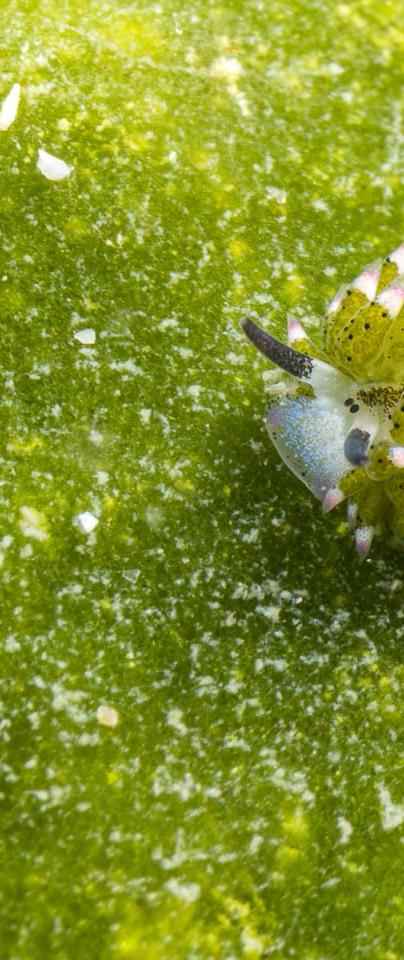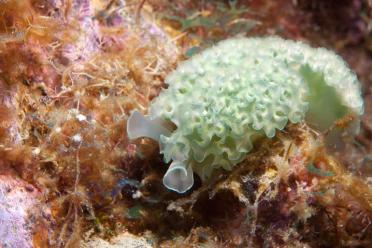Spotlight on: Synthetic Biology with Nicola Patron
Synthetic biology is bridging the worlds of biotechnology and engineering, advancing the predictable modelling of novel biological systems and their products - from medicines to biosensors and more.
Dr Nicola Patron, Earlham Institute’s Synthetic Biology Group Leader and SynbioLEAP fellow, fills us in on the many applications of synthetic biology, its strong ethical foundations, and how the future of SynBio will look a lot more like precision engineering and a lot less like a biology experiment.
Synthetic biology is the application of the principles of engineering to biology and biotechnology. In other words, making biology easier to engineer. I discovered the synthetic biology community while looking for ways to design bigger and better experiments.
In terms of applications, I find a future where we have moved towards sustainable, biology-based manufacturing pipelines particularly attractive. As an experimental biologist, the ability to be able to scale up research and make it more quantitative is also very exciting.

I’m also continually grateful to have inspiration, encouragement and support from a group of fantastic female leaders who, in this very male-dominated field, are pioneering cutting-edge work at the intersections of engineering, computing, biology and design. They know who they are.

One of the ultimate aims of synthetic biology would be to create a perfect model of a biological system so that it is possible to predict exactly what needs to be re-programmed in order to make that system produce or behave as desired. In working towards that goal, synthetic biology will contribute to our understanding of biology as well as providing products such as biosensors, medicines and therapies. In a couple of decades, we expect that the work we are doing now will have contributed to that aim and that we will be able to use existing knowledge to predict outcomes so that synthetic biology is a lot more like engineering and a lot less like a biology experiment.
We have strong foundations and organisations in place to ensure that research is ethical.
We also have laws and rules that govern the use and applications of technology. The vast majority of scientists, both within traditional institutions and in new spaces are committed to working within those guidelines. As scientists we have to engage with and communicate advances to regulatory bodies and law-enforcement to ensure that they are equipped with the right knowledge to recognise and investigate anyone suspected of misusing any technologies.
It’s a text on synthetic biology and biotechnology in plants and will be part of a larger series of primers in synthetic biology aimed at undergraduates and masters students who are interested in multidisciplinary approaches or would like an introduction to a new area or application of biotechnology.

In terms of applications, I find a future where we have moved towards sustainable, biology-based manufacturing pipelines particularly attractive.
Many people. Firstly, Megan Palmer at Stanford, who is a thought leader in the field, encouraging us as scientists to be proactive in taking the right steps to ensure that our work has positive social impact. I’m also continually grateful to have inspiration, encouragement and support from a group of fantastic female leaders who, in this very male-dominated field, are pioneering cutting-edge work at the intersections of engineering, computing, biology and design. They know who they are.
Synthetic Biology is multidisciplinary and in Norwich Biomakers we’re aiming to bring together people with different kinds of expertise (like programming, electronics, hardware, biology etc.) so that they can help each-other, start new projects and create solutions for problems in their local communities. It’s open to anyone interested in the intersection of science, design and technology and who wants to learn (or teach) some new skills, wants to get involved in making something or just wants to contribute to the conversation.
One of the projects being pursued by the Norwich Biomakers is the development of “fuel cells” that harvest small amounts of electricity produced by electron transport that takes place in living organisms. Yes, a forest might provide enough voltage to power a small device that could, for example, monitor its own wildlife populations.


I would like the option to house endosymbionts as ‘skin pets’ so that I could gain energy by photosynthesis without having to kill and eat plants. It’s the ultimate conscious diet.

Biosensors are devices that use biological molecules, even whole organisms, to detect the presence of something and maybe tell you how much there is of it. They represent an exciting area in synthetic biology at the moment with the potential to be able to rapidly develop low-cost tests for things like viruses. This will be critical for accurately monitoring and preventing the spread of emerging diseases.
iGEM is a fantastic non-classroom education experience for undergraduates where students learn by designing, building and testing. It’s a great arena to test high-risk ideas and obtain proof-of-concept so that you can apply for funding or investment. Also, brainstorming ideas with teams of undergrads from different disciplines is a fantastic way to ensure that you cover new ground, learn about new problems and come up with completely novel approaches to tackle them.

I would like the option to house endosymbionts as ‘skin pets’ so that I could gain energy by photosynthesis without having to kill and eat plants. It’s the ultimate conscious diet and is only really a small step away from gut microbes.